What Does “Cocktail Piano” Mean To You?
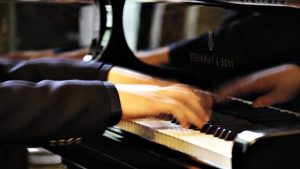 Perhaps you have never heard it put quite that way. If you asked 20 pianists how they would define “cocktail piano” the responses you get just might surprise you. I once saw cocktail piano described something like, “a style of piano playing where a melody is embellished with lots of runs and flourishes.”
Perhaps you have never heard it put quite that way. If you asked 20 pianists how they would define “cocktail piano” the responses you get just might surprise you. I once saw cocktail piano described something like, “a style of piano playing where a melody is embellished with lots of runs and flourishes.”
Once I read that, it was instantly apparent that the person offering that definition was at one time sitting in a restaurant or club enjoying a cocktail while listening to a pianist who just happened to be playing with lots of runs and flourishes.
I prefer viewing the cocktail piano style as a way of playing that compliments a setting in which people can be enjoying cocktails and/or a nice meal while they can still hear themselves talk. If you can accept that, then it seems that our concept of cocktail piano suddenly invites lots of piano playing styles. If whatever you are playing serves as a nice compliment to such an ambiance, then it would be accurate enough to say that it falls under that category of cocktail piano playing.
Your Attitude Means Everything
I personally feel that a person who aspires to master this art of cocktail piano opens himself or herself up to an opportunity to enhance their skills and overall musicality.
For example, a loud and boisterous version of Ellington’s Take The A Train played with walking bass and/or stride left hand just might offer too much competition to a couple trying to digest a full course meal while enjoying some soft conversation. But does that mean this standard is a poor choice for a relaxed dinner scenario? Of course not. This is where to attitude you adopt comes into play. Why not play the same tune pianissimo? Also, you can replace that walking bass or stride by simply playing short staccato chords or voicings with the left hand. Playing in this manner even allows you to play out of time. Experiment with playing just a phrase at a time… leave some space… play another phrase… more space… play a little… “tease” the listener, so to speak.
Think playfully and you’re playing with be a perfect complement to the scenario. While doing so, even if your audience is conversing and sipping wine, you can count on the fact that they are interacting with you, even if it is on an unconscious level.
Add New Dimension To Your Playing
Consider making a list of some of those songs in your repertoire that you haven’t considered as being generally acceptable in a quiet setting. Once you do that, consider what you can do to make them acceptable. Consider how you can play around with contrasting dynamics, phrasing, and articulation.
Investing some time doing this will provide you with so much value. The result? You are going to find that you quickly are turning yourself into a much more creative musician. Not only will you appreciate your playing more but others will, too. It very well could spell out the difference between the player who doesn’t get called back and the one who is asked to fill the spot regularly for weeks or months to come.

 Walking Bass: A Cocktail Pianist’s Right Arm (Ooops, Left)
Walking Bass: A Cocktail Pianist’s Right Arm (Ooops, Left) I would like to express my heartfelt thanks to the many recent positive comments I have been receiving from participants of this popular jazz piano chord voicings program. I often reflect on the moments of creation of
I would like to express my heartfelt thanks to the many recent positive comments I have been receiving from participants of this popular jazz piano chord voicings program. I often reflect on the moments of creation of 


 Melodic embellishment is the one aspect of piano improvisation that lends itself to your sounding “pro” very quickly, considering how little effort is needed on your part. What you do need is to resolve to have some fun with a few very easy concepts. Impressive results tend to manifest faster than you might expect.
Melodic embellishment is the one aspect of piano improvisation that lends itself to your sounding “pro” very quickly, considering how little effort is needed on your part. What you do need is to resolve to have some fun with a few very easy concepts. Impressive results tend to manifest faster than you might expect.
 When you hear the same tune being played by a number of different players, it’s pretty easy to determine which of those players have a real handle on what they are doing in terms of harmony. It doesn’t take much effort to recognize when great sounding piano chords are being played.
When you hear the same tune being played by a number of different players, it’s pretty easy to determine which of those players have a real handle on what they are doing in terms of harmony. It doesn’t take much effort to recognize when great sounding piano chords are being played.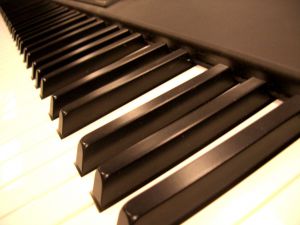
 When it comes to playing cocktail piano chords that are the among the easiest to play while being extremely effective, what we’ll be looking at here will rate high on the list. If you know how to play some simple triads (three-note chords), this will come easy to you. In addition, you’ll discover for yourself that, even if you don’t have a specific tune in mind, you can compliment a nice ambience with these cocktail piano chords when played subtlety and legato.
When it comes to playing cocktail piano chords that are the among the easiest to play while being extremely effective, what we’ll be looking at here will rate high on the list. If you know how to play some simple triads (three-note chords), this will come easy to you. In addition, you’ll discover for yourself that, even if you don’t have a specific tune in mind, you can compliment a nice ambience with these cocktail piano chords when played subtlety and legato.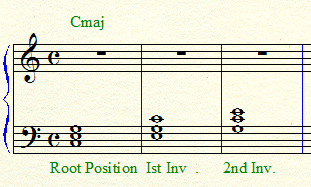

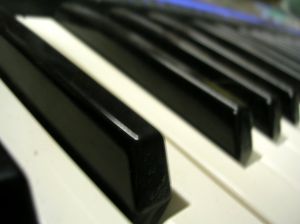
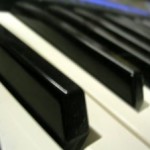 Your repertoire of jazz piano chords will undoubtedly include the exploration of quartal voicings if you are sincere in your interest in this art form. There is much to share when it comes to quartal voicings and we do acknowledge them in
Your repertoire of jazz piano chords will undoubtedly include the exploration of quartal voicings if you are sincere in your interest in this art form. There is much to share when it comes to quartal voicings and we do acknowledge them in 
 One of the piano scales enjoyed by the pros as an alternative to the major scale as most of us know it will be acknowledged here. This scale really can add some “juice” while improvising over those major 7th chords. What’s great, too, is if you’re already familiar with the traditional major scale, you’ll find this one easy to get used to.
One of the piano scales enjoyed by the pros as an alternative to the major scale as most of us know it will be acknowledged here. This scale really can add some “juice” while improvising over those major 7th chords. What’s great, too, is if you’re already familiar with the traditional major scale, you’ll find this one easy to get used to. One of the best piano improvisation tips that I ever had been exposed to was that of “going outside the chord.” I mean, when most of us first learn to improvise, we are encouraged to utilize the actual chord tones of the chord we are playing. By the way, this is good advice. That said, you can add even more dimension to your use of those chord tones when you consider using those “other” notes.
One of the best piano improvisation tips that I ever had been exposed to was that of “going outside the chord.” I mean, when most of us first learn to improvise, we are encouraged to utilize the actual chord tones of the chord we are playing. By the way, this is good advice. That said, you can add even more dimension to your use of those chord tones when you consider using those “other” notes. Notice that the first four eighth notes are simply those “other” notes… yes, the chord tones from Amin7… and the following four eighth notes consist of only chord tones from Gmin7.
Notice that the first four eighth notes are simply those “other” notes… yes, the chord tones from Amin7… and the following four eighth notes consist of only chord tones from Gmin7.